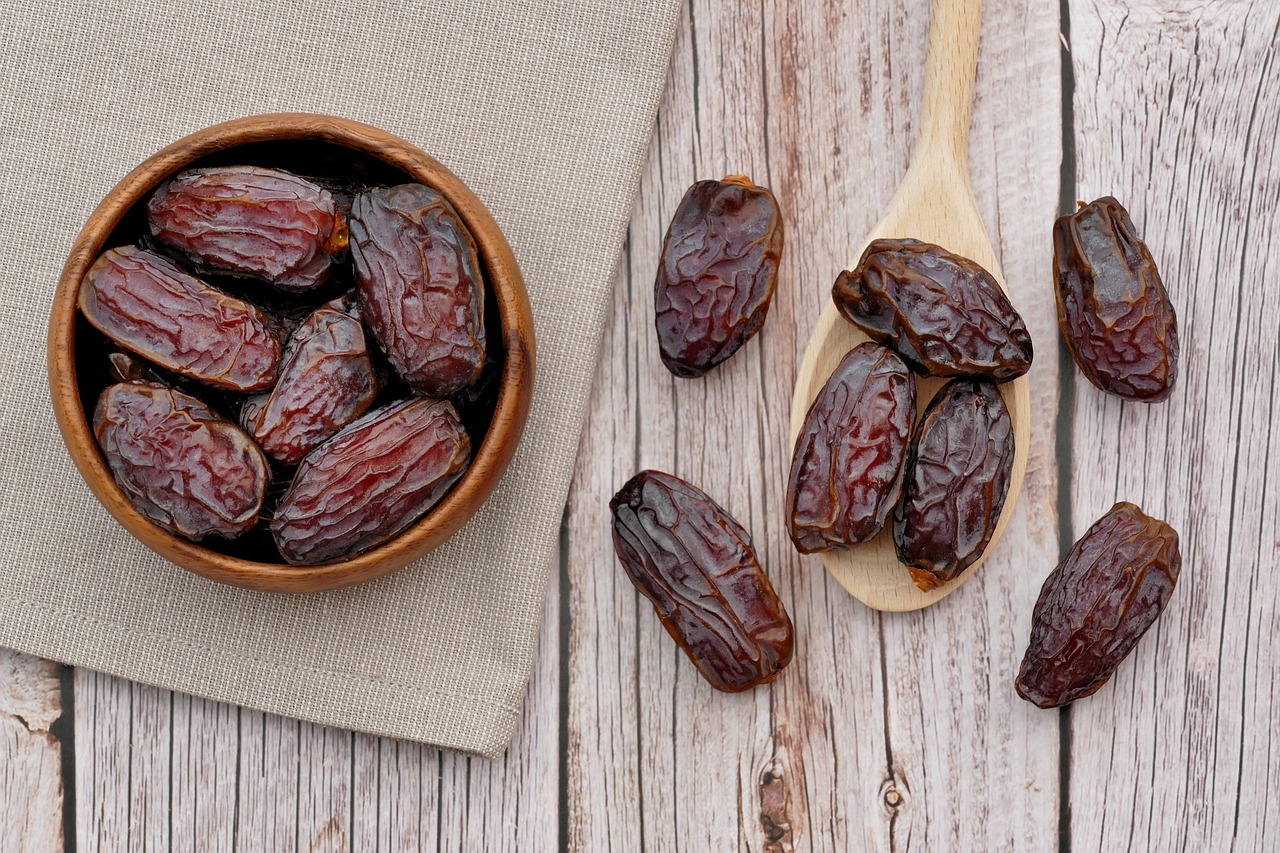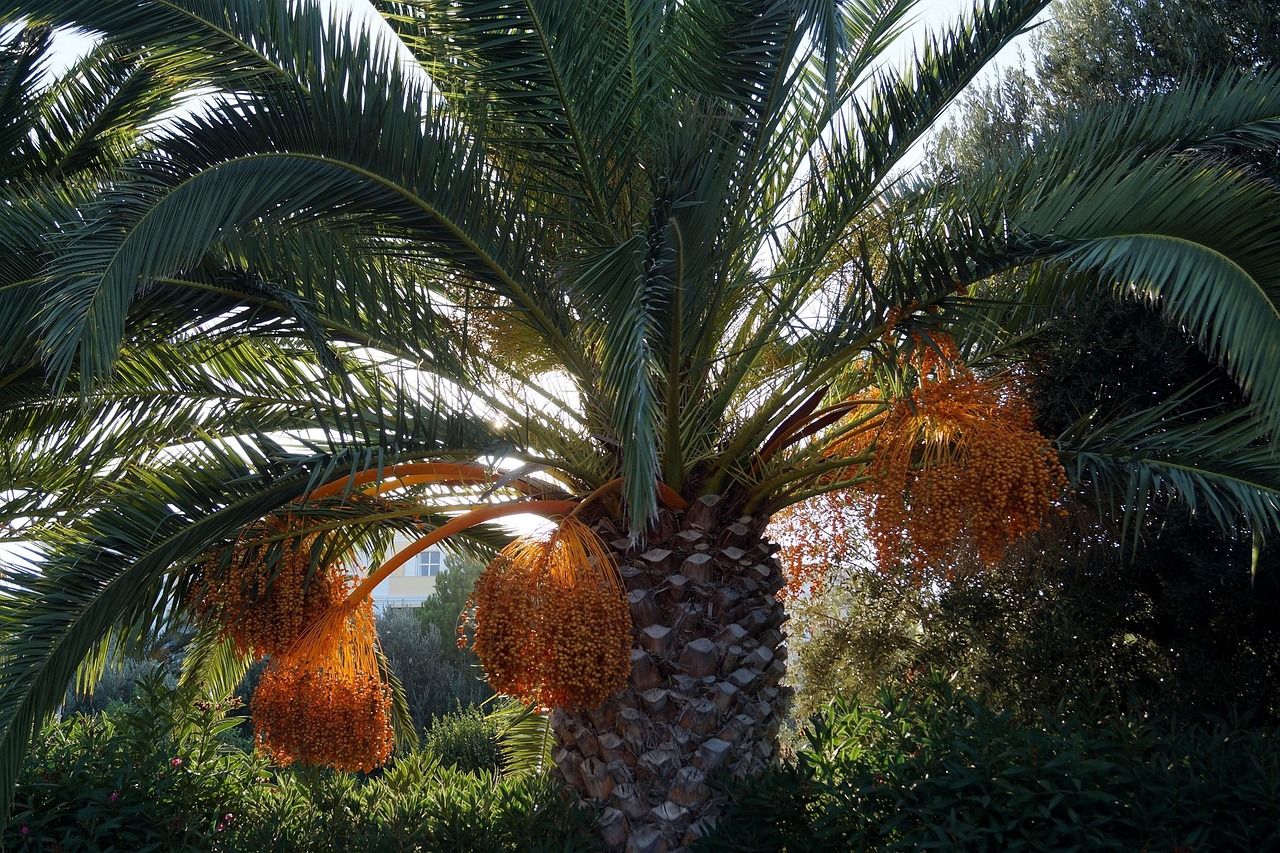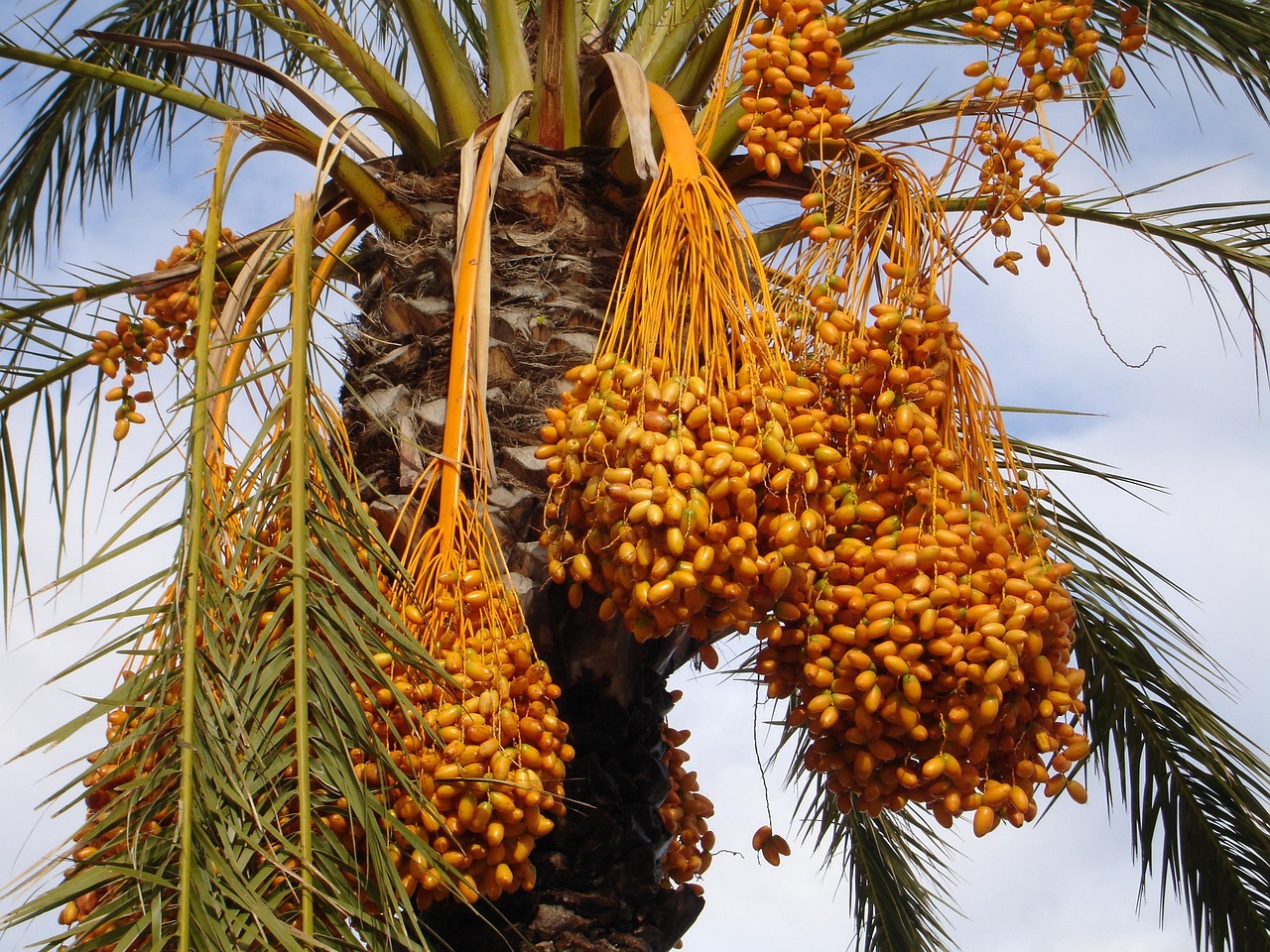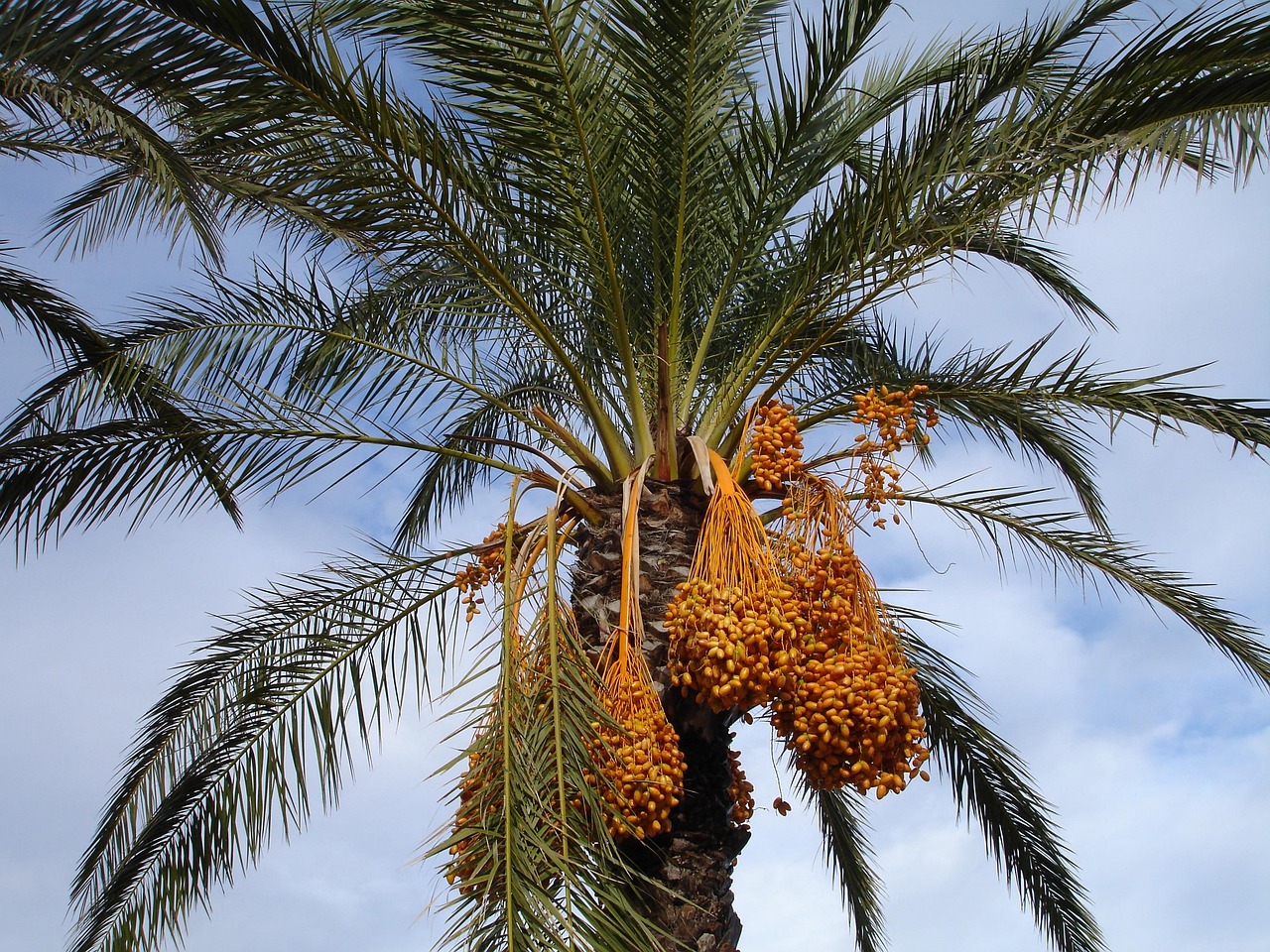Pruning date palms is vital for eco-tourism areas, ensuring tree health and visual allure. It enhances fruit output, curbs diseases, and bolsters visitor safety, serving as a cornerstone of sustainable tourism. This practice not only captivates tourists but also safeguards ecosystems, underscoring its indispensable role in eco-tourism management.
Understanding Date Palm Pruning
Date palms (Phoenix dactylifera) are iconic trees often associated with arid and semi-arid regions. They are not only valued for their delicious fruit but also for their environmental benefits and cultural significance. In eco-tourism areas, maintaining healthy date palms is crucial for attracting visitors and preserving local ecosystems.

Pruning is a vital part of date palm care. It involves removing dead or unwanted leaves and fruit clusters. This process helps improve air circulation around the tree, reduces the risk of pests and diseases, and enhances the overall appearance of the landscape. Effective pruning can lead to healthier trees that produce more high-quality dates.
The Benefits of Pruning Date Palms in Eco-Tourism
In eco-tourism settings, there are several key benefits to regularly pruning date palms:
- Enhanced Aesthetics: Well-pruned date palms contribute to a clean and attractive environment, enhancing the overall experience for visitors.
- Improved Health: Removing dead or diseased fronds can prevent the spread of infections and pests, promoting healthier trees.
- Increased Fruit Production: Proper pruning encourages better fruit yield by allowing more sunlight to reach the remaining fronds.
- Visitor Safety: Pruning reduces the risk of falling debris, making pathways safer for tourists.
Pruning Techniques
Effective pruning techniques vary depending on the age of the tree and the desired outcome. Here are some common methods used in date palm pruning:

- Frond Removal: Removing older fronds helps redirect energy to healthier leaves and fruit production. Older fronds should be cut at the base, close to the trunk.
- Thinning: This involves selectively removing some fronds to improve airflow and sunlight penetration. Thinning is critical in preventing fungal diseases.
- Flower Cluster Management: Removing excess flower clusters can help concentrate resources on fewer clusters, leading to larger and better-quality dates.
When to Prune Date Palms
The timing of pruning is crucial for maximizing the benefits. Generally, late winter to early spring is the optimal time for pruning date palms. During this period, trees are less active, reducing stress and promoting recovery. However, specific timing may depend on local climate conditions. It is essential to monitor trees closely for signs of disease or damage throughout the year.
Tools and Equipment Needed for Pruning
Proper tools ensure effective and safe pruning practices. The following tools are commonly used in date palm pruning:
- Pruning Shears: Ideal for cutting smaller fronds and flower clusters.
- Loppers: Useful for reaching higher fronds without climbing.
- Saws: Necessary for cutting larger fronds or branches that cannot be handled with shears.
- Gloves: Protect hands from sharp edges and thorns.
- Ladders: For accessing taller palms safely.
Environmental Considerations
While pruning is beneficial, it is essential to consider its environmental impact. Sustainable practices should be adopted to minimize harm to local wildlife and ecosystems. Here are some environmentally friendly practices:

- Avoid Over-Pruning: Excessive cutting can stress the tree and reduce its lifespan.
- Use Organic Methods: Prefer natural pest control methods to reduce chemical use in eco-tourism areas.
- Dispose Responsibly: Ensure that pruned materials are disposed of or composted in a way that does not harm local habitats.
Conclusion on Pruning Practices
Date palm pruning is more than just a maintenance task; it plays a critical role in sustaining eco-tourism areas. By ensuring healthy trees and a beautiful landscape, responsible pruning practices enhance both the visitor experience and the ecological balance of the environment.
This section covers the importance of date palm pruning in eco-tourism areas, focusing on techniques, timing, tools, and environmental considerations. Through proper management, date palms can thrive and support both tourism and local ecosystems effectively.
Post-Pruning Care for Date Palms
After pruning date palms, providing adequate care is essential for promoting recovery and ensuring the health of the trees. This section discusses the steps needed to support date palms post-pruning, including watering, fertilization, and pest management.

Watering Needs
Watering is critical after pruning, as the tree may experience stress. Proper hydration helps the date palm recover and encourages new growth. Here are some guidelines for watering:
- Deep Watering: Ensure deep watering to promote root growth. A slow soak is preferable to shallow watering.
- Watch for Signs: Monitor the soil moisture. Water the tree when the top inch of soil feels dry.
- Adjust for Weather: During hot months, increase watering frequency, while reducing it during cooler periods.
Fertilization Practices
Fertilization supports new growth and overall health after pruning. Choosing the right type of fertilizer and applying it at the correct time can enhance recovery.
- Balanced Fertilizers: Use a balanced fertilizer that contains nitrogen, phosphorus, and potassium. These nutrients are crucial for growth and fruit production.
- Application Timing: Apply fertilizer shortly after pruning, during the active growth period of the palm.
- Organic Options: Consider organic fertilizers such as compost or manure to improve soil health over time.
Pest Management Strategies
Pests can pose a serious threat to date palms, especially after they have been pruned. Implementing effective pest management strategies is vital for maintaining tree health.
- Regular Inspections: Check trees regularly for signs of pests or diseases. Early detection is key to preventing infestations.
- Natural Predators: Encourage beneficial insects that prey on pests. Ladybugs and lacewings can help control aphid populations.
- Insecticidal Soaps: If necessary, use insecticidal soaps or oils that are safe for the environment to manage pest issues without harming beneficial insects.
The Role of Soil Quality
The quality of soil in which date palms grow significantly impacts their overall health and productivity. Proper soil management can lead to better growth and fruit yield.
Soil Composition
Date palms thrive in well-drained sandy loam soils. The ideal soil should have good aeration and drainage properties. Here are key components to consider:
- Drainage: Ensure that water does not pool around the roots, as this can lead to root rot.
- Nutrient-Rich Content: The soil should be rich in organic matter to provide essential nutrients.
- pH Levels: Maintain a soil pH level between 6.0 and 8.0 for optimal growth.
Improving Soil Quality
Enhancing soil quality can lead to healthier date palms. Here are some methods to improve soil conditions:
- Add Organic Matter: Incorporate compost or well-rotted manure into the soil to boost nutrient levels.
- Aeration Practices: Regularly aerate the soil to improve drainage and root access to oxygen.
- Cover Crops: Planting cover crops can prevent soil erosion and enhance soil fertility during off-seasons.
Incorporating Date Palms into Eco-Tourism Design
Date palms can be an integral part of eco-tourism design due to their aesthetic appeal and environmental benefits. Proper planning ensures that these trees enhance visitor experiences while promoting sustainability.
Landscape Design Considerations
When incorporating date palms into eco-tourism landscapes, consider the following design elements:
- Placement: Position palms strategically along pathways, near seating areas, or in open spaces to maximize visual impact.
- Diversity: Combine date palms with other native plants to create a diverse ecosystem that attracts wildlife and enhances biodiversity.
- Shelter and Shade: Utilize palms to provide shade for visitors, creating comfortable resting areas within the tourism site.
Educational Opportunities
Date palms offer unique opportunities for education within eco-tourism areas. Visitors can learn about sustainable practices through various activities:
- Tours and Workshops: Organize guided tours that explain the importance of date palms and demonstrate pruning techniques.
- Tasting Events: Host events where visitors can taste different varieties of dates and learn about their nutritional benefits.
- Sustainability Programs: Implement programs that educate visitors on sustainable agriculture practices relevant to date palm cultivation.
The integration of date palms into eco-tourism areas requires careful planning and management. By ensuring optimal care post-pruning, maintaining soil quality, and designing landscapes thoughtfully, eco-tourism sites can create a sustainable environment that benefits both visitors and local ecosystems.
Challenges in Date Palm Pruning
While pruning date palms is essential for their health and the overall aesthetics of eco-tourism areas, several challenges can arise. Understanding these challenges helps in devising effective solutions that ensure successful management of date palms.
Pest Infestations
Pest infestations can significantly impact the health of date palms. Various insects, such as the red palm weevil and date moth, can damage fronds and fruit, leading to decreased yields.
- Identification: Early detection of pest presence is crucial. Regularly inspect the palms for signs of damage or pest activity.
- Control Measures: Implement biological control methods, such as introducing natural predators. Chemical insecticides can be used as a last resort, ensuring they are environmentally friendly.
- Monitoring Programs: Establish monitoring programs to keep track of pest populations and evaluate the effectiveness of control measures.
Climate Factors
Extreme weather conditions can pose a challenge for date palm cultivation. Factors like drought, excessive rainfall, and temperature fluctuations can affect the growth and health of the trees.
- Drought Management: Implement irrigation systems that provide sufficient water during dry spells. Drip irrigation is particularly effective for date palms.
- Flooding Risks: Ensure proper drainage around palms to prevent root rot during heavy rainfall. Raised beds can help mitigate flooding issues.
- Temperature Control: While date palms are hardy, extreme cold can damage young fronds. Use protective covers during unexpected cold snaps.
Best Practices for Sustainable Date Palm Pruning
Implementing best practices in date palm pruning ensures that the trees remain healthy while supporting the eco-tourism initiative. These practices focus on sustainability, efficiency, and safety.
Timing and Frequency of Pruning
The timing and frequency of pruning are critical factors in promoting healthy growth. Here are some guidelines:
- Seasonal Considerations: Late winter or early spring is ideal for pruning as the trees enter their growth phase.
- Frequency: Prune palms annually or bi-annually, depending on their growth rate and environmental conditions.
- Weather Conditions: Avoid pruning during wet conditions to reduce the risk of disease transmission.
Utilizing Technology in Pruning Practices
The incorporation of technology can enhance pruning practices, making them more efficient and effective. Here are some technological advancements that can be utilized:
- Drones: Use drones for aerial surveillance to assess tree health and identify areas that require pruning.
- Mobile Apps: Utilize mobile applications designed for orchard management. These apps can help track pruning schedules and monitor tree health.
- Sensors: Install soil moisture sensors to determine optimal watering needs post-pruning.
Community Engagement in Eco-Tourism Areas
Engaging the local community in date palm management enhances eco-tourism initiatives while promoting sustainable practices. Community involvement encourages stewardship and knowledge sharing.
Involving Local Farmers
Local farmers can play an essential role in managing date palms within eco-tourism sites. Their experience and knowledge can contribute to better practices.
- Training Programs: Organize training sessions for local farmers on best practices in date palm care and pruning techniques.
- Collaborative Efforts: Encourage collaboration between farmers and eco-tourism operators to share resources and expertise.
- Cultural Exchange: Create opportunities for farmers to showcase traditional methods of date palm cultivation to visitors.
Visitor Participation
Encouraging visitor participation in activities related to date palm care can enhance their experience while promoting awareness about sustainability.
- Workshops: Host workshops where visitors learn about pruning techniques and participate in hands-on activities.
- Volunteer Programs: Develop volunteer programs that allow visitors to assist with tree care, fostering a connection to the environment.
- Sustainability Tours: Offer tours that educate visitors on the importance of date palms in local ecosystems and their role in sustainable agriculture.
The Economic Impact of Date Palm Cultivation
Date palm cultivation has significant economic implications for eco-tourism areas. Understanding these impacts can help stakeholders make informed decisions regarding resource allocation and management strategies.
Direct Economic Benefits
Date palms provide numerous direct economic benefits, contributing to both local economies and tourism revenue.
- Agricultural Revenue: The sale of dates generates income for local farmers and contributes to the agricultural sector’s growth.
- Tourism Revenue: Eco-tourism activities centered around date palms attract visitors, boosting local businesses such as restaurants, shops, and lodging facilities.
- Cultural Significance: Events celebrating dates and traditional practices create additional income opportunities through festivals and markets.
Long-Term Economic Sustainability
Sustainable practices in date palm management ensure long-term economic viability for communities involved in eco-tourism.
- Biodiversity Enhancement: Maintaining healthy date palm ecosystems supports a diverse range of wildlife, which attracts tourists interested in nature-based experiences.
- Circular Economy Initiatives: Encourage local production and consumption by integrating date palm products into local markets, reducing reliance on external sources.
- Sustainable Practices Promotion: Educating stakeholders about sustainable farming methods leads to increased resilience against climate change impacts.
Date palm cultivation offers numerous opportunities and challenges within eco-tourism areas. By addressing these challenges and implementing best practices while engaging the community, stakeholders can foster a thriving ecosystem that benefits both people and the environment.
Future Trends in Date Palm Pruning and Eco-Tourism
As eco-tourism continues to grow, the role of date palms and the methods of their care, including pruning, will evolve. Several emerging trends are likely to shape the future of date palm management in eco-tourism areas. Understanding these trends can help stakeholders adapt and thrive.
Integration of Sustainable Technology
Advancements in technology will play a significant role in the sustainable management of date palms. Some potential technological integrations include:
- Precision Agriculture: Utilizing sensors and data analytics to monitor soil health, moisture levels, and tree vitality will allow for more precise and efficient care.
- Automation: Robotic systems could assist with pruning and other maintenance tasks, reducing labor costs and improving efficiency.
- Remote Monitoring: Drones and satellite imagery can be used to survey large areas for tree health assessments, allowing for timely interventions.
Enhanced Visitor Engagement through Technology
Technology will also improve visitor engagement in eco-tourism areas. Interactive experiences can provide educational opportunities while promoting sustainable practices:
- Augmented Reality: AR applications can offer visitors an immersive experience by providing information on date palm cultivation and pruning techniques as they explore the area.
- Virtual Workshops: Online platforms can host workshops where experts teach sustainable practices to a wider audience, enhancing global awareness.
- Mobile Apps: Apps can guide visitors through eco-tourism sites, highlighting areas of interest related to date palms and offering tips on sustainable practices.
Policy and Support for Sustainable Practices
Government policies and support for sustainable agriculture play a crucial role in the success of date palm cultivation within eco-tourism areas. Advocacy for sustainable practices can lead to positive environmental and economic outcomes.
Government Incentives
Policies that encourage sustainable farming methods can greatly benefit local communities involved in eco-tourism:
- Subsidies for Sustainable Practices: Financial incentives for farmers who adopt eco-friendly methods can promote responsible date palm management.
- Training Programs: Government-sponsored training programs can educate farmers on the latest sustainable practices, including effective pruning techniques.
- Research Grants: Supporting research into date palm diseases, pests, and sustainable cultivation practices will help improve overall management.
Collaboration with NGOs
Non-governmental organizations (NGOs) can play a vital role in fostering sustainable practices in eco-tourism areas:
- Community Education: NGOs can provide training and resources to local communities on sustainable agricultural practices.
- Conservation Efforts: Collaborating with local stakeholders to create conservation programs that protect both date palms and local ecosystems.
- Awareness Campaigns: NGOs can raise awareness about the importance of date palms in eco-tourism, driving support from both locals and visitors.
Final Thoughts
Date palm pruning is a crucial element in maintaining the health of these iconic trees while enhancing the aesthetic appeal of eco-tourism areas. As we have explored throughout this article, successful pruning practices, post-care strategies, community engagement, and the integration of technology all contribute to the sustainability of date palm management.
The challenges posed by pests, climate factors, and economic pressures require continuous adaptation and innovation. By implementing best practices, stakeholders can promote healthier ecosystems while benefiting local economies through tourism. Future trends indicate a shift towards technology-driven solutions that will not only improve efficiency but also enhance visitor experiences.
In summary, the future of date palms in eco-tourism offers exciting potential. It is essential for all stakeholders—farmers, local communities, tourists, and policymakers—to work collaboratively towards sustainable practices that support both the environment and the economy. The journey toward a more sustainable approach to date palm management is ongoing, and with commitment and innovation, it can lead to a thriving ecosystem that benefits everyone involved.
